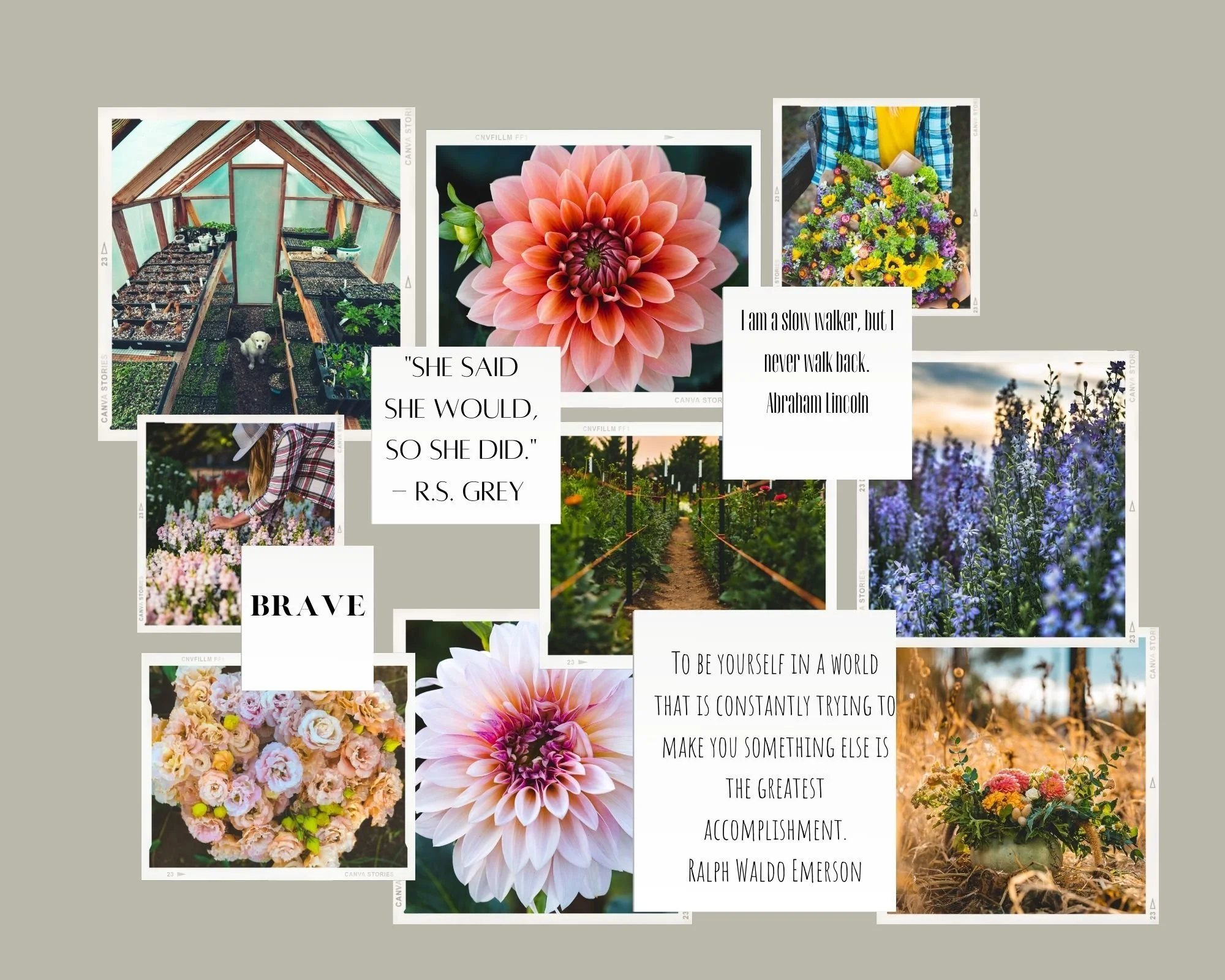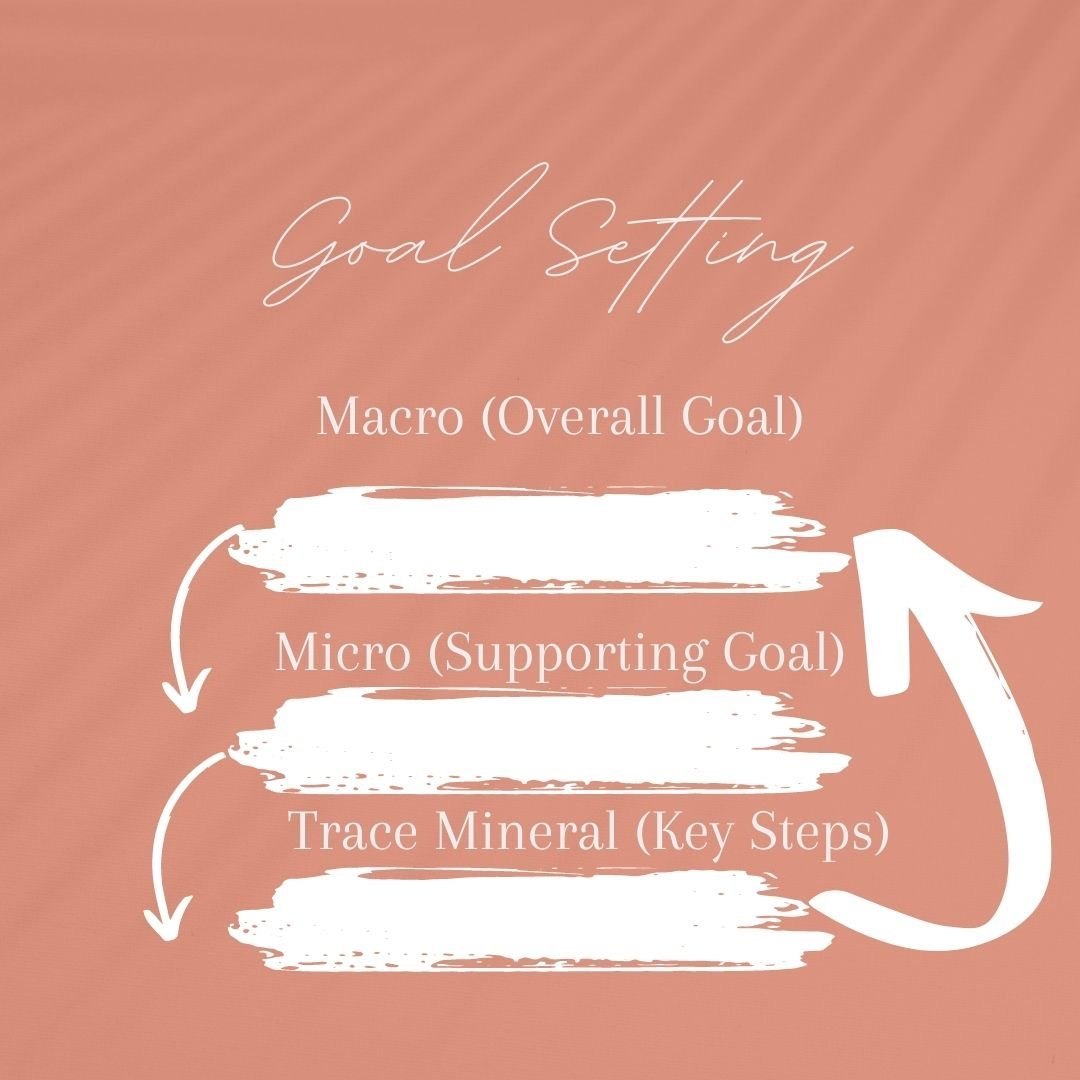Goal-Setting for Flower Farmers | Strategies for Growth and Success
January is the perfect time to cozy up by the fire and set goals for the upcoming flower season. Winter, once my least favorite season, has become one of my most cherished times of year. After a few years of flower farming, I realized winter offers a rare opportunity: the time and mental clarity to reflect, dream, and plan for what’s ahead.
During the active growing and selling season, life moves fast. As our business grew, spare moments for creative visioning were the first thing to disappear, replaced by problem-solving, fulfilling orders, and tackling an endless to-do list. Growing flowers is a process that demands planning months in advance—there’s no rushing it. By June, I’m tucking in my final planned succession of zinnias, not throwing in the first round like a hobbyist with a last-minute seed packet.
Flower farming is highly seasonal, especially in our climate. We push ourselves to the max while we have blooms to sell because making hay while the sun shines isn’t just a saying—it’s our reality. And yet, nothing fills my cup quite like this quieter season of dreaming, anticipating, and creating a roadmap for the months ahead.
Taking the time to set goals allows you to step outside the grind and view your flower farming business with fresh eyes. It’s your chance to clarify what you want, make actionable plans, and ensure the upcoming season sets you up for success. Without planning, flower farming can quickly become overwhelming—or worse, a money pit. Simply throwing seeds into the ground and figuring out sales later is a recipe for frustration. If you’re running a business, you need a strategy; otherwise, this dream job can feel like anything but.
Goal setting starts with dreaming, and that’s where vision boarding comes in. Winter is the ideal time to dive into this process, as most flower farmers experience a lull between the hustle of the holidays and the start of seed sowing. By late winter, seeds will already be in trays, crops growing, and plans in motion. Trust me, the time will fly by. So, let’s make the most of these next few weeks to lay the groundwork for a bountiful season ahead!
Flower Farming: Your Hero’s Journey
Sometimes, I wonder if I overuse the word “journey,” but it just fits. When I think of flower farming, I can’t help but compare it to Frodo and Sam’s adventure in The Lord of the Rings.
Their rugged dirt path was filled with uncertainty, excitement, and moments of calm beauty. Challenges tested them, but they persevered and completed their task, even when it was messy or overwhelming.
That’s how I see flower farming—a journey of epic highs and lows, where the challenges are daunting but the rewards make it all worthwhile. Embrace it. Shape it into your own. And when you face mountains to climb, remember the beauty waiting on the other side.
The Importance of Setting Goals
Goal setting provides the road map to transform your flower farming business into what you envision. Without a clear direction, it’s easy to drift aimlessly, and growth becomes difficult to measure. Setting specific goals helps you break down your vision into actionable tasks, ensuring a more focused and successful season. In fact, this process is the foundation of creating a business plan.
Start by setting goals for the upcoming season, then think ahead to three-year and five-year milestones. By approaching your flower farm with intent and purpose, you’ll build a solid framework for success.
Vision Boarding: Dream Big First
Before diving into goal setting, allow yourself to dream big. That’s where vision boarding comes in! A vision board is a visual representation of your aspirations and the first step in turning dreams into actionable goals. This practice is valuable for new flower farmers and experienced ones alike because your vision can evolve over time as you learn and grow.
What is a Vision Board?
A vision board doesn’t have to be a physical board (though it can be). It’s a collection of images, quotes, and words that inspire you and represent what you hope to achieve. Here’s how you can approach it:
Hands-On Approach: Create a physical board using magazines, glue sticks, and a corkboard. This can slow you down and encourage deeper reflection, especially if you tend to rush through tasks.
Digital Options: Use Pinterest to create a digital board or design one on Canva. These platforms make it easy to gather inspiration and organize your ideas visually.
Creative Outlets: Draw or paint your vision board for a personal touch, or go professional by crafting a presentation in PowerPoint.
Choose the format that works best for you and your unique process. This is your opportunity to reflect, dream, and plan without limits.
Why Vision Boarding Works
Putting your ideas into a visual format helps you clarify and prioritize your goals. What feels chaotic or overwhelming in your mind becomes clearer when laid out physically or digitally. A vision board is the starting point for transforming your dream into something tangible and actionable.
From Vision to Action
Once your vision board is complete, it’s time to start setting actionable goals. These goals will guide you through the process of making your dream a reality, one step at a time.
Creating Goals: The Building Blocks of Success
When it comes to setting goals, they can be as broad or specific as you need them to be. The approach you take will depend on your personality and where you are in your flower farming journey. To simplify the process, I like to think of goals in terms of the nutrients a plant needs: macro nutrients, micro nutrients, and trace minerals.
Let me explain how this works for goal setting.
Macro Goals: The “What”
Macro goals are the big-picture objectives you want to achieve. Think of them as the driving force behind your flower farm’s vision and growth. These broader goals are your guiding compass for the season (or even beyond).
Example Macro Goals:
Selling 30 bouquets a week
Transitioning from a corporate job to full-time flower farming
Expanding into larger-scale wedding work
Identify one or more key goals that excite and motivate you. These big-picture dreams will shape your overall direction and provide clarity for what you’re working toward.
Micro Goals: The “How”
Once you’ve nailed down your macro goals, it’s time to map out the micro goals—these are the supporting objectives that outline how you’ll achieve your big-picture vision.
Example Micro Goals:
Selling 30 bouquets a week > through a weekly farmers’ market
Launching a bouquet subscription service
Establishing a u-pick patch
These smaller goals will guide your strategies and give you a clear path forward.
Trace Minerals: The Key Steps to “Make It Happen”
Finally, break your micro goals into actionable steps. These are the tangible tasks you’ll need to check off to bring your vision to life.
Example Key Steps:
Research local farmers’ markets
Contact market managers to secure a spot
Create a crop plan to ensure you can produce at least 30 bouquets weekly
Obtain necessary permits and insurance
Design and set up your market booth
This stage is where progress starts to feel real. You’ll begin to see how your efforts are paving the way toward your goals. These tasks may push you out of your comfort zone, but they’re where the magic happens!
Why This Framework Works
Just like plants need all types of nutrients to thrive, your macro goals rely on micro goals and key steps to bring everything together. By breaking down the process, you can manage it in bite-sized pieces without feeling overwhelmed. This method helps you stay organized and focused while keeping your goals attainable.
Tools to Help You Stay on Track
To keep everything organized, I recommend using tools like ASANA or Notion. Both are fantastic apps for creating tasks, setting deadlines, and collaborating with others. I’ve found them invaluable for tracking progress and brainstorming with my husband, Graham.
ASANA: Great for quick setup and ease of use, even for beginners.
Notion: Perfect if you prefer customizable templates and want total control over your planning system.
If you’re more of a pen-and-paper person, don’t worry! We’ve included a printable goal-setting worksheet at the end of this post to help you get started.
Feeling Overwhelmed? Break It Down Further
If your goals feel too broad or intimidating, try dividing them into categories, such as business goals and growing goals. This approach helps you prioritize and manage your focus without feeling scattered.
It’s Okay If You Don’t Hit Every Goal
Remember, goals are a compass, not a contract. They’re meant to guide you in the right direction—not dictate every step you take. While some tasks are essential for progress, it’s important to give yourself grace when things don’t go exactly as planned.
Unforeseen circumstances are bound to happen. A crop might fail, a storm might derail your timeline, or life might simply throw you a curveball. And that’s okay! The hopes and dreams we build during the quiet winter months don’t always match the realities of the growing season, but goal-setting is still worth the effort.
Why? Because setting goals gives you focus, clarity, and a positive mindset to tackle the season ahead. Even if you don’t accomplish everything, the process helps you prioritize and progress toward your vision.
So, don’t get discouraged—stay flexible, stay positive, and most importantly, keep growing.
Let’s Dream Big Together
We hope this post has given you the inspiration and tools you need to create your vision board and set meaningful goals for the upcoming flower season. Whether it’s your first year or your fifth, taking the time to reflect and plan will always pay off in some way.
Now’s the time to dream big, set your sights high, and start turning those goals into reality. Let’s make this season one to remember!
We are looking forward to sharing more blooms with you soon.
Jessica & Graham
Ready to Take the Next Step?
With your goals in place, it’s time to think about how to achieve them. These blogs are packed with helpful tips for maximizing your resources, planning strategically, and setting yourself up for success:








